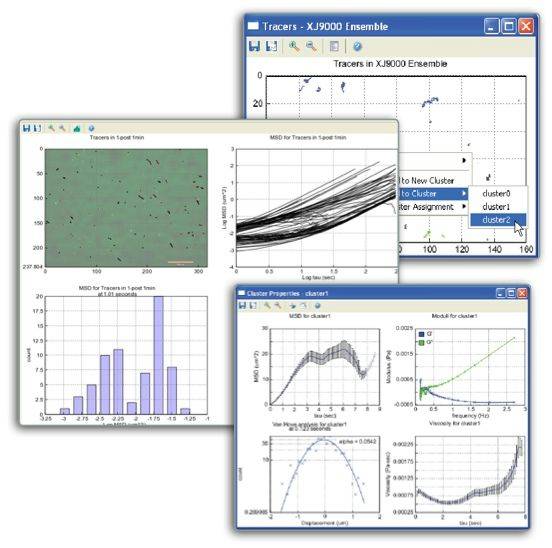CHALLENGE:
- Reduce the amount of complex laboratory work to determine the rheology of non-Newtonian fluids
- Enable significantly more fluids to be designed and tested
SOLUTION:
- Automate the capturing of individual video frames at the micron level of the motion of tracer particles
- Group tracer paths into clusters and analyze each separately using Chaco
RESULT:
- Updates of rheology in real time based on cluster selection
- Significantly reduced lab time and expand the number of fluids that can be tested
CHALLENGE
Rheology, the analysis of non-Newtonian fluid properties, conventionally requires cumbersome experimental setups with centrifuges and substantial quantities of test fluid. The technique of microrheology, pioneered at Harvard’s Experimental Soft Condensed Matter Group, consists of capturing the motion of micron-scale tracer particles in the test fluid through a microscope. The statistical analysis of the Brownian motion of the tracer particles can yield the rheological properties in a small amount of fluid.
SOLUTION
Microrheology Lab implements sub-pixel particle tracking to assemble the independent frames of video into traces of unique particles that can be analyzed. The user can group the traces into clusters that can be analyzed separately. We use the interactive capabilities of Chaco to link the plots together such that they update live based on the selection of clusters.
Figure 1. The custom-developed Microrheology Lab software allows users to visually analyze sub-pixel particles.
